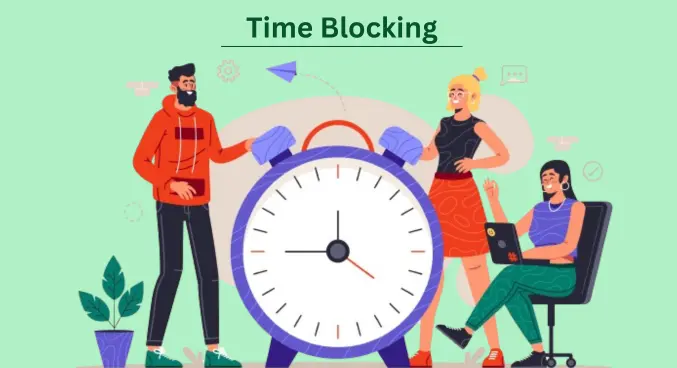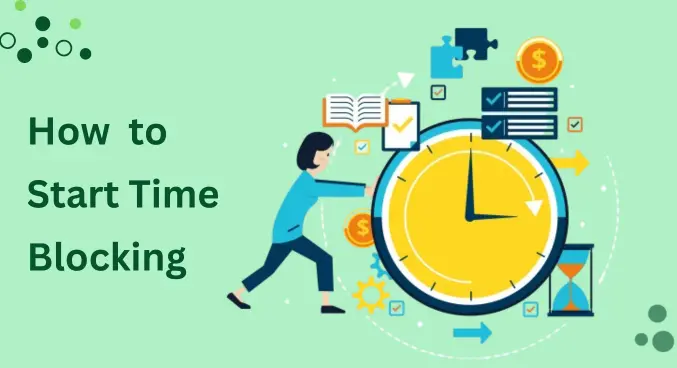What is Time Blocking, and How Do You Use It?

In today’s fast-paced world, managing time effectively is crucial for productivity and success. One powerful technique that has gained significant popularity is time blocking. But what exactly does this method entail, and how can it revolutionize your daily routine? This technique involves dividing your day into specific segments, each dedicated to a particular task or activity. By utilizing a daily planner with this method, you can ensure that every minute of your day is accounted for. Whether you use a physical planner with a weekly checklist or a digital app, this approach can greatly enhance your time management skills. Tools like Time Traker can also support you in effectively implementing this strategy by offering seamless integration with your time-tracking needs.
What is Time Blocking?
Time blocking is a time management technique where you schedule specific periods for different tasks throughout your day. Instead of relying on a to-do list that can sometimes feel overwhelming, this method allows you to allocate dedicated time slots for each activity. This technique not only helps you prioritize important tasks but also ensures that you stay focused and avoid distractions.
For instance, if you’re working on a project that requires deep concentration, you can block out two hours in your daily planner to work solely on that task. Similarly, you can reserve time for meetings, exercise, and even breaks. The key is to be intentional with your schedule, ensuring that every period is used purposefully.
Why Use This Technique?
This method offers several benefits that can transform how you manage your day:
- Improved Focus: By dedicating specific time slots to tasks, you eliminate multitasking, which often leads to decreased productivity. This strategy helps you focus on one task at a time, increasing the quality of your work.
- Better Time Management: With this approach, you have a clear plan for your day, making it easier to manage your time effectively. It allows you to allocate time for both work-related tasks and personal activities, ensuring a balanced day.
- Reduced Stress: Knowing exactly what you need to do and when to do it can reduce the stress that comes with an overwhelming to-do list. This method provides structure and predictability to your day.
- Increased Productivity: By organizing your day with specific periods, you can maximize productivity. This technique encourages you to work within the constraints of time, helping you achieve more in less time.
How to Start Time Blocking

To get started, follow these simple steps:
- Identify Your Tasks: Begin by listing all the tasks you need to complete for the day or week. This includes work-related tasks, personal commitments, and any other activities you need to accomplish.
- Prioritize Your Tasks: Once you have your list, prioritize the tasks based on their importance and deadlines. This will help you determine which tasks require more time and which can be completed quickly.
- Create Time Blocks: Use a daily planner or a digital app to create blocks for each task. Ensure that the time allocated for each task is realistic, allowing you to complete it without feeling rushed.
- Stick to the Schedule: The success of this technique lies in sticking to the schedule you’ve created. Avoid the temptation to deviate from your plan, as this can disrupt the flow of your day.
- Review and Adjust: At the end of the day or week, review your blocks to see how well they worked. Adjust your schedule as needed to improve efficiency in the future.
Tools and Resources
To make this method even more effective, consider using tools and resources that can assist you in this process. Here are a few options:
- Daily Planner: A physical or digital daily planner that includes blocking features can be a valuable tool. Look for planners that offer a weekly checklist to help you track your progress over time.
- Time Blocking App: Several apps are available that allow you to create and manage your schedule digitally. These apps often come with features like reminders, notifications, and analytics to help you stay on track.
- Time Traker: Time Traker is a versatile tool that not only helps with time tracking but also integrates well with this method. With seamless QuickBooks Online integration and effortless time tracking, Time Traker can be a valuable addition to your time management toolkit.
In Action

Let’s say you have a busy day ahead, with multiple tasks to accomplish. Here’s how you might use this technique to organize your day:
- 8:00 AM – 9:00 AM: Morning routine (exercise, breakfast)
- 9:00 AM – 11:00 AM: Work on a key project (deep focus block)
- 11:00 AM – 11:30 AM: Break (relaxation, coffee)
- 11:30 AM – 1:00 PM: Attend meetings
- 1:00 PM – 2:00 PM: Lunch break
- 2:00 PM – 4:00 PM: Complete client work (focused task block)
- 4:00 PM – 4:30 PM: Break (quick walk, stretch)
- 4:30 PM – 6:00 PM: Review emails and plan for the next day
By following this schedule, you ensure that each task is given the time it deserves, while also incorporating breaks to recharge.
Challenges and How to Overcome Them
While this technique is a powerful one, it’s not without its challenges. Here are a few common obstacles and how to overcome them:
- Unpredictable Interruptions: Sometimes, unforeseen events can disrupt your schedule. To handle this, build in buffer time between blocks to accommodate any unexpected interruptions.
- Overloading Your Schedule: It’s easy to overestimate how much you can accomplish in a day. Be realistic with your time blocks, and don’t be afraid to adjust them as needed.
- Difficulty in Sticking to the Plan: If you find it hard to stick to your schedule, start with shorter intervals and gradually increase them as you become more comfortable with the technique.
Conclusion: Mastering Time Blocking for Success
This method is a transformative technique that can help you take control of your day, improve your time management skills, and boost your productivity. By understanding what time blocking is and how to use it effectively, you can ensure that every minute of your day is used purposefully. Whether you choose to use a daily planner with blocking, a weekly checklist, or a digital app, the key is to stay consistent and make adjustments as needed. And with tools like Time Traker supporting your time management efforts, you’ll be well on your way to mastering this technique and achieving your goals.
